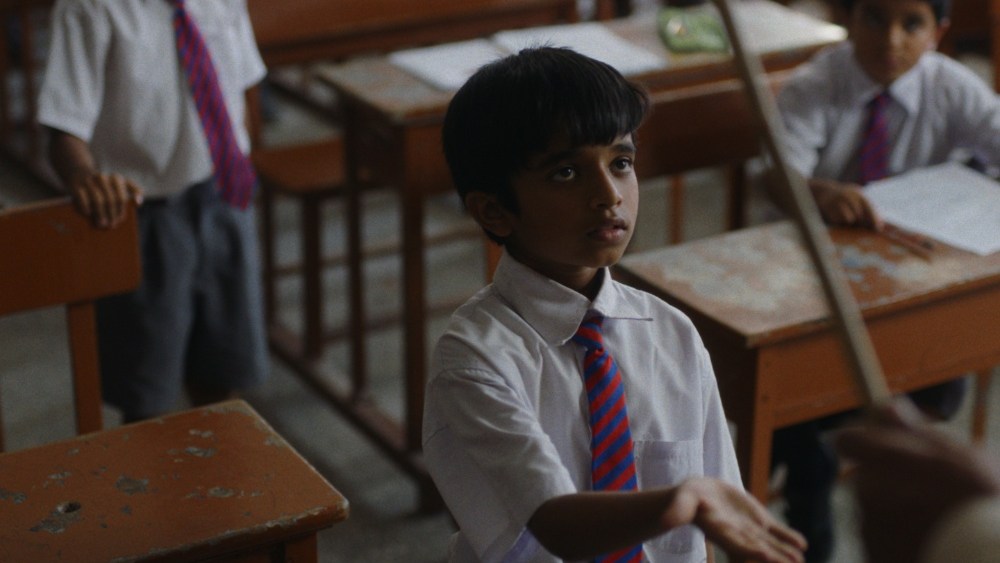‘Don’t Tell Mother’ Director Talks Busan Debut Feature
The title of Anoop Lokkur’s debut feature “Don’t Tell Mother” proved prophetic in more ways than one. The writer-director-producer not only explored family secrets in his tender drama about 1990s Bangalore (as Bengaluru was known then), but kept the biggest secret of all from his own mother: that he was using his saved house deposit money to fund the film. The movie premiered in the Windows to Asian Cinema section at the Busan International Film Festival.
“During pre-production, it was revealed that Anoop was not telling his mother about the creation of this feature film, and the fact that he was using his saved up money for a house deposit to fund the feature film,” says cinematographer Matthew Jenkins, who also served as producer on the project. “He told his parents that they were making a short film, knowing that they would not understand how long a short film takes and how long a feature film takes.”
Set in 1990s Bangalore, southern India, the film follows a family that appears ordinary on the surface but gradually reveals tensions and unspoken struggles. At its center is Lakshmi (Aishwarya Dinesh), a mother who wants independence through starting a small business but is repeatedly blocked by family dynamics, while her young son Akaash (Siddharth Swaroop) endures corporal punishment at school.
“When I was writing the script, I found myself reflecting on my childhood,” Lokkur explains. “This made me realize how much my mother endured without ever telling our family. That stayed with me. In India especially, there’s often a gap between how we present ourselves and our families to society and what is actually going on in the home.”
The director, who moved from Bengaluru to Australia in 2007 and built a career in international business before studying at Victorian College of Arts, drew from deeply personal experiences for the story. “This conflict is very personal to me as I went through something similar. As a teenager, I wanted to study photography. I was never encouraged to follow this passion, and my parents told me I needed to get a degree and a stable job.”
Lokkur cites directors Kore-eda Hirokazu and Edward Yang as major influences, particularly in learning that “suggestion can be more powerful than explanation.” The film’s visual approach reflects this philosophy, with Jenkins and Lokkur developing a distinctive style using fixed frames and long lenses.
“We decided to be in the corner and then move the camera around. But then we were like, we’re still suggesting where the audience should look. And then we decided, okay, we’re actually going to go with a fixed frame,” Jenkins recalls. “We really want the people, the audience, to be a voyeur on a family.”
The production faced unique challenges shooting a period piece on a modest budget in Bengaluru. “Being a 90s film and trying to deal with a micro budget, it just meant that exteriors were really tough,” Jenkins notes. “We really couldn’t point the camera anywhere, because there was so much modern technology that it just meant that we just didn’t have the budget to paint those things out.”
Perhaps the biggest risk came in casting. Lokkur found lead actor Siddharth Swaroop, who plays Akaash, in a cafe at Ranga Shankara performing arts theatre in Bengaluru. “His first audition was terrible — he wasn’t interested and was just playing with his cars on the floor! But my gut said he was the right choice,” Lokkur reveals. Both young leads were non-actors, with Anirudh P. Keserker bringing “natural energy and stubbornness that couldn’t be taught.”
The film’s structure underwent significant evolution during development. “The earliest draft was told through Aakash’s eyes. When I shared it with my wife and my DP, Matt, we all felt something was missing. That’s when I realized the heart of the story was the mother,” Lokkur explains. “Writing the script helped me see my mother in a way I never had.”
Jenkins and Lokkur deliberately framed the mother character “so she gradually moved closer to the camera throughout the film, as if her presence was asserting itself. I wanted her to be really seen.”
The international collaboration between Lokkur and Australian cinematographer Jenkins began years earlier when they met during Lokkur’s film studies. Their relationship deepened during Melbourne’s extended COVID-19 lockdowns, when they would take walks within the city’s five-kilometer radius restriction. “During that time, me and Anoop would go for lots and lots of walks. He would give me revisions of his scripts. He would just chat about characters and story,” Jenkins recalls.
Jenkins, who became both cinematographer and producer, notes that working across language barriers on the Kannada-language film proved unexpectedly rewarding. “There’s a universal language of making a film, and once everyone reads the scripts and kind of gets on board and understands what you’re trying to achieve, the shorthand starts to develop, and that was really beautiful to see.”
Looking ahead, the filmmakers hope to continue the festival circuit with European and North American premieres, but emphasize the importance of bringing the film home. “‘Don’t Tell Mother’ was photographed in Bengaluru, it’s incredibly important to us that the film screens there as well,” Jenkins says. “This is a film about a Bangalore family, and what better way to complete its festival journey than by bringing it home to where it was created.”
For Lokkur, the film serves both as a window into Indian culture and a universal mirror. “Gender roles and suppressed dreams are not unique to India and exist in different forms across cultures,” he notes. “When people leave the film, I hope we can reflect on the sacrifice of our mothers, and how we can serve our mothers better, because they’ve spent their whole lives serving ours.”
The film features Aishwarya Dinesh as Amma, Karthik Nagarajan as Appa, and Anirudh P. Keserker as Adi, with editing by Pavan Bhat and music by Krishna Purohit. It is produced by Papunu Films.

